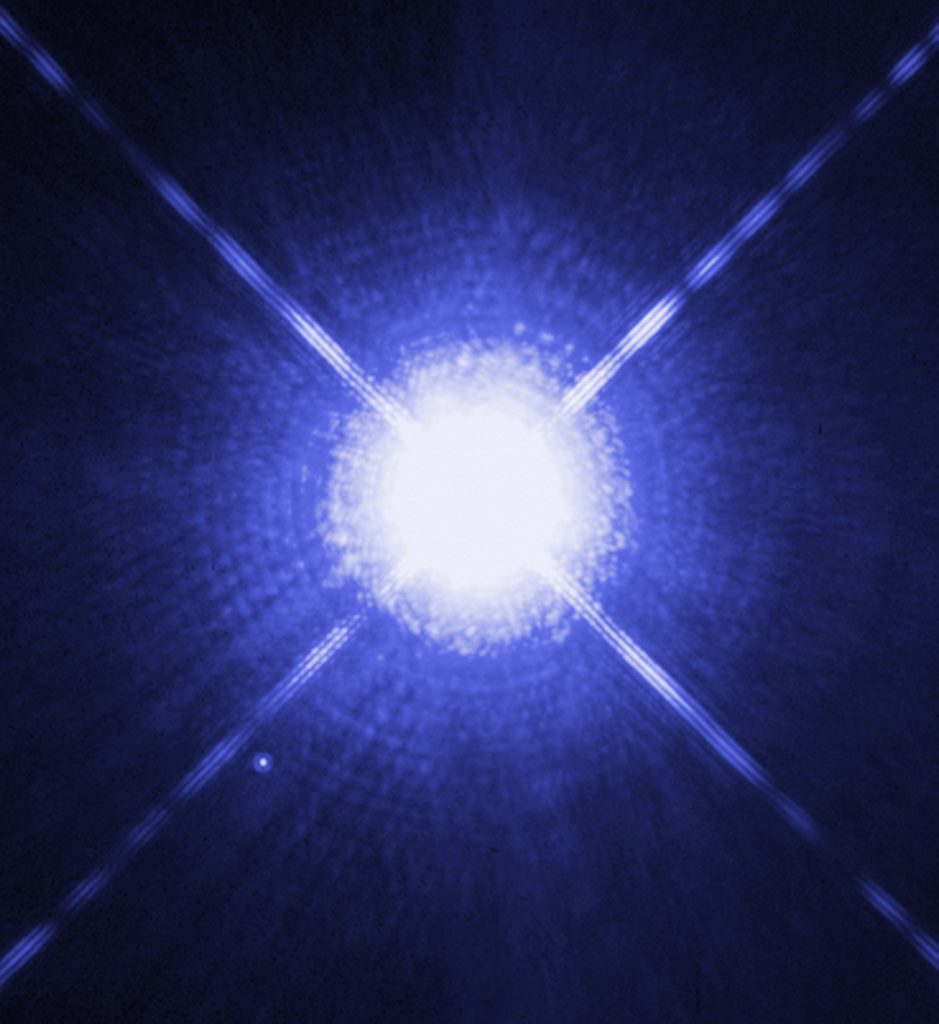The star Sirius is the brightest star in our night sky. Located in Canis Major (and therefore sometimes called the Dog Star), Sirius is best observed during the winter months in northern latitudes. To find Canis Major and Sirius, recruit the help of Orion. Follow Orion’s belt stars to the left and they will lead you to Sirius.

Image made using Stellarium.
If we could place our Sun and Sirius next to each other, we would see that Sirius is about 2 times larger and it would outshine our Sun by more than 20 times.While it is bigger and brighter than our Sun, the main reason for Sirius’ apparent brightness is due to its relative closeness to Earth. At a distance of 8.6 light years, Sirius makes the list for “The Top 10 Nearest Stars” to our Solar System.
Credit:ESO/I. Crossfield/N. Risinger (skysurvey.org)
“Sirius-ly” Fun Facts:
- The term “dog days” was used by the ancients to refer to the period of time in July when Sirius (aka the Dog Star) rose just before the Sun did.
- Under the right conditions (clear skies and the observer is at high altitude) Sirius can be seen during the day with the naked eye. However, to successfully do this, it would need to be at a time when the Sun was low on the horizon and Sirius would be passing overhead.
- In 1862, astronomers discovered that Sirius was actually two stars. The white-blue star that we see is designated Sirius A and a smaller white dwarf companion is called Sirius B.

Credit: NASA, ESA, H. Bond (STScI), and M. Barstow (University of Leicester)

